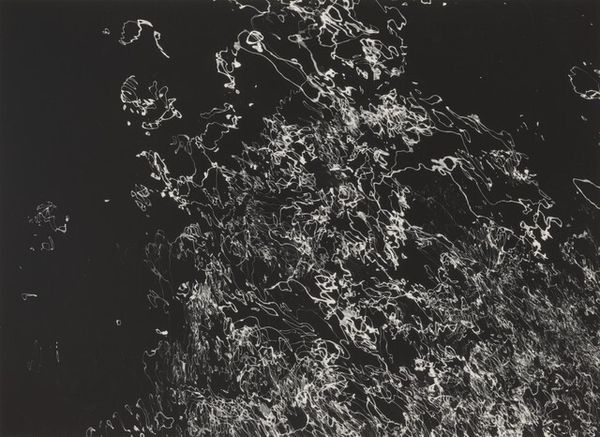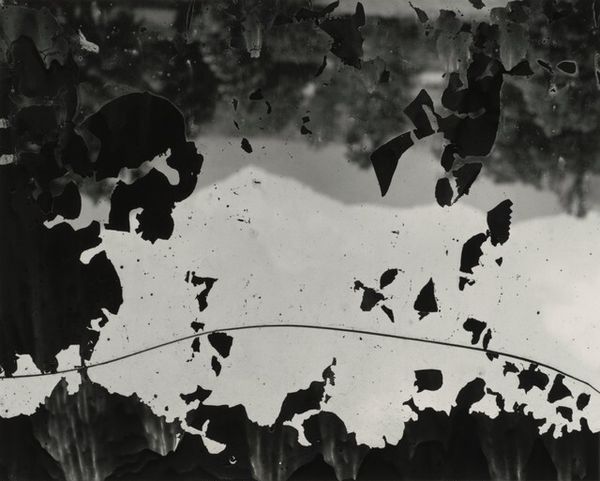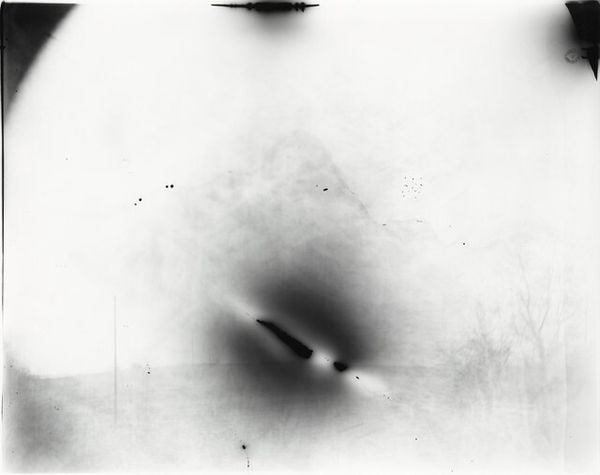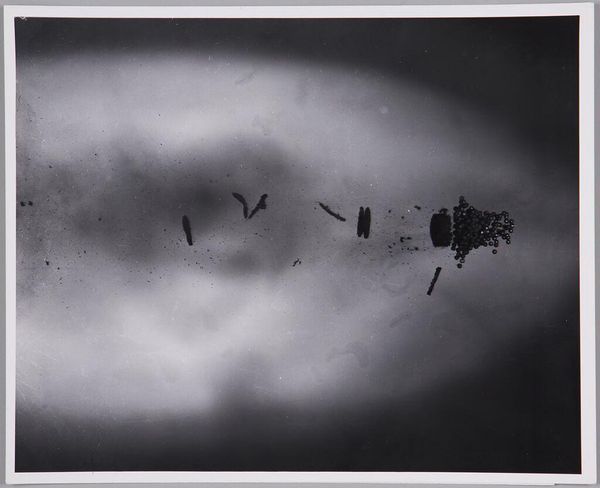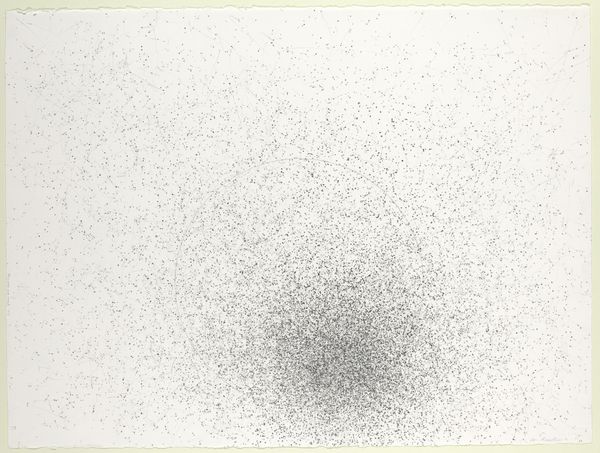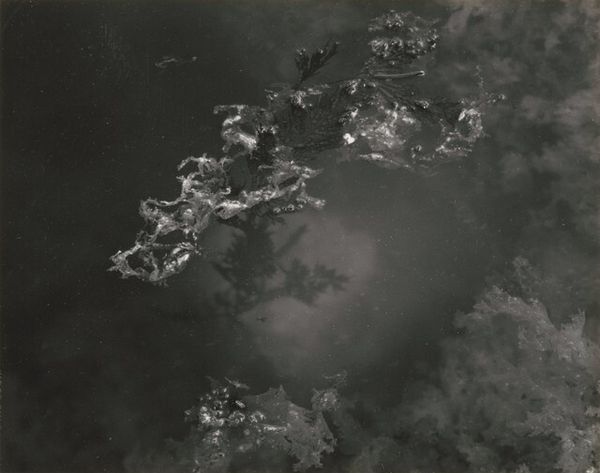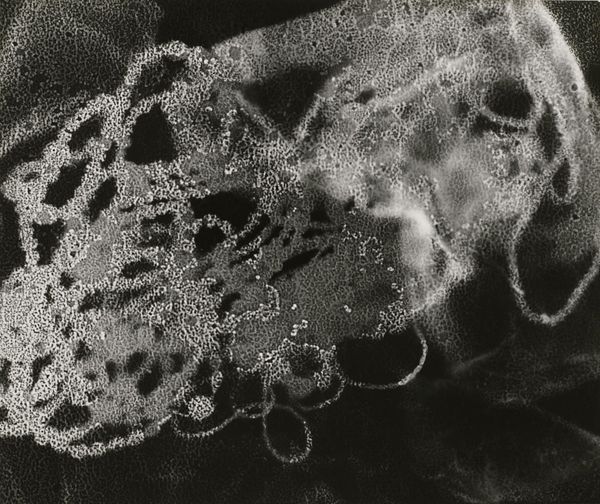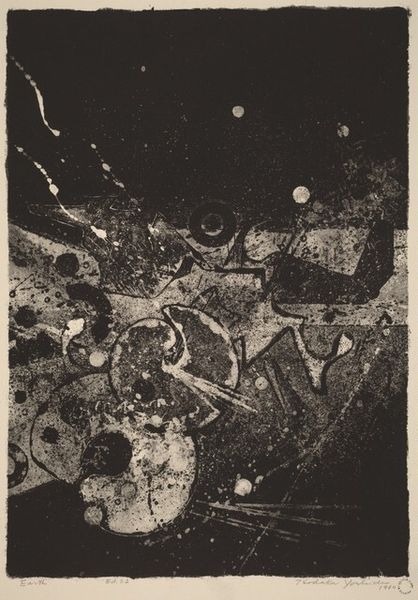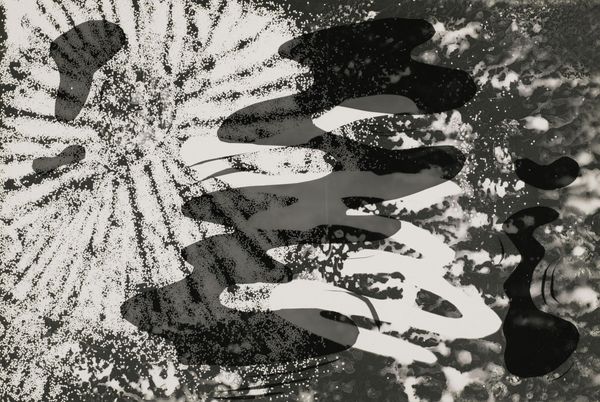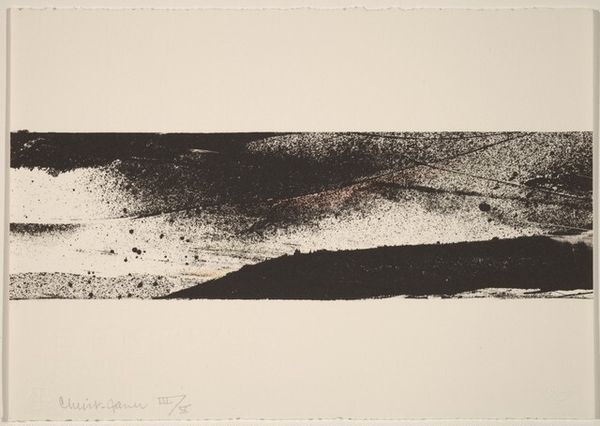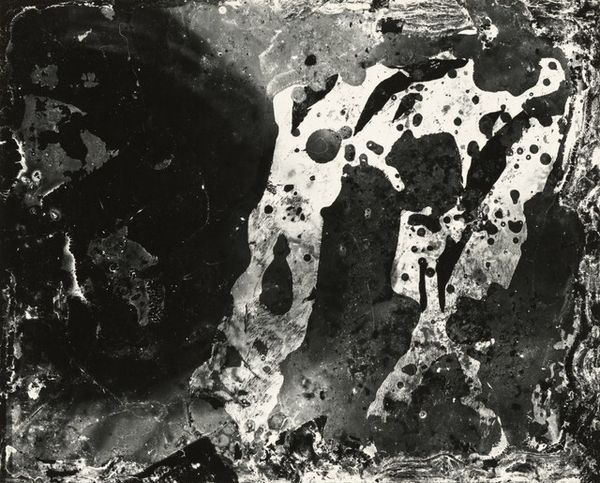
Dimensions: image: 24 × 31.3 cm (9 7/16 × 12 5/16 in.) sheet: 27.8 × 35.3 cm (10 15/16 × 13 7/8 in.) mount: 40.7 × 50.5 cm (16 × 19 7/8 in.)
Copyright: National Gallery of Art: CC0 1.0
Editor: Here we have Carl Chiarenza’s “Charlestown 34” from 1976, a gelatin-silver print. Its monochrome palette and speckled texture create an intriguing yet somewhat unsettling atmosphere. What do you see in this piece? Curator: Immediately, the binary opposition of black and white establishes a visual tension. The stark contrast creates a dynamic interplay, almost a push and pull, across the picture plane. Note the distribution of light; it is not uniform. There's a clear directional force at play, an upper darkness giving way to an effervescent lower field. Editor: It’s like one state dissolving into another, isn't it? How does this calculated arrangement contribute to its overall meaning? Curator: The calculated arrangement of tonal values creates a non-representational, almost sculptural quality. Think about the materiality of the print itself – the texture of the gelatin-silver, the choices in exposure. Does this perhaps signal an inquiry into the essence of photographic language itself? Are we meant to see the surface, the medium, as much as, if not more than, a referent? Editor: So, you're saying it prompts us to look at photography beyond just capturing reality? To see the inherent properties of the medium as the message? Curator: Precisely. The artwork’s strength resides in its self-referentiality, compelling us to consider the ontological status of the photographic image. The work transcends representation, focusing instead on pure form. Editor: It is intriguing how an image seemingly devoid of recognizable forms can stimulate so much thought. I never thought of it that way. Curator: That is the magic of formalism, and the power of carefully considering what lies within the frame.
Comments
No comments
Be the first to comment and join the conversation on the ultimate creative platform.
